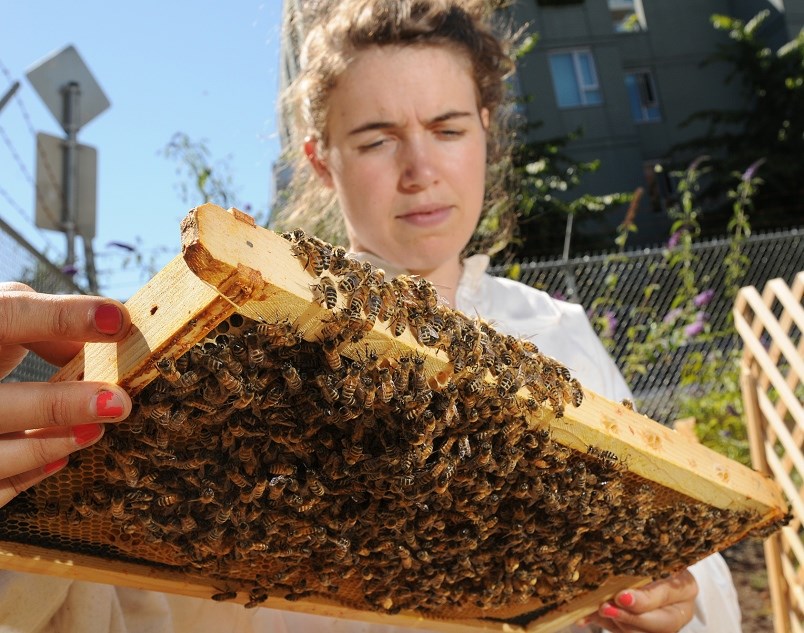You would think that in our city of Vancouver, a city loudly trumpeted by Mayor Gregor Robertson as the future “greenest city in the world,” they would be doing something about the growing practice of spraying insecticides containing neonicotinoids to preserve private lawns from the impact of chafer beetles.
But you would be wrong.
And you would think that when asked, the city’s corporate communications folks to whom you are directed when inquiring about this poisonous practice would do more than email you a copy of the city’s health bylaw (no 9535) and direct you to the section (210) then shrug. Wrong again.
Except they did say that someone at city hall, couldn’t say who, is looking at the bylaw, but don’t know why or to what end. Now that’s comforting.
(By the way, when CBC addressed this issue last week, Vancouver failed to provide anyone to speak to it.)
Section 210 of bylaw 9535 provides a loophole that is big enough to float an oil tanker through; it says all pesticides that may not otherwise be used can be used if there is a pest infestation “which involves an immediate or potential risk of substantial loss or damage.” I’ll get to that “loss or damage” in a moment.
Now I should tell those of you who don’t know, just to be transparent, that when I am not writing this column for the Courier, I spend much of my time as a beekeeper.
I should also tell you that among the many things afflicting the lives of honey bees as well as native bees globally is the very same insecticide that is used to kill the larvae of chafer beetles; those grubs have been passing through their larval stage munching on grass roots throughout the Lower Mainland for the past 15 years. (Lawns are actually ripped up by crows and raccoons feeding on these apparently tasty critters.)
Honey bees are affected by taking pollen and nectar from any plants growing on or near treated lawns. (The chemical is watered to soak into the ground. The water is picked up by the roots of any number of flowering plants or weeds and gets into the plants’ nectar or pollen.)
But even if there are no flowers affected, Mark Winston, one of North America’s leading bee scientists, points out the impact on native bees is even more lethal. He calls it a “considerable menace.” Consider that about 70 per cent of native bees, including solitary bees and bumble bees, are exposed because they live in the ground.
To its credit, the Vancouver park board does not use any insecticides on its property. If chafer larvae are present, it uses nematodes, a tiny insect introduced to the ground which feeds on the chafer beetle larvae.
The trade name for the most common insecticide is Merit. It is produced by Bayer. Bayer, with very little research according to Winston, claims the product “minimizes risk for use on turf.” But neonicotinoids in Merit disrupt the nerve impulses of the insects ultimately killing them.
They have the same effect on bees and other pollinators.
Actually neonicotinoids kill a wide variety of insects and have been used to coat seeds planted by farmers. They are a systemic, which means, once coating the seed they permeate the whole plant as it grows.
So what is this “immediate or potential risk of substantial loss or damage” that allows this practice?
In Vancouver that usually means messing up a lawn.
But among other things, lawns have become more of an environmental hazard than a benefit. What began as an affectation of European aristocrats centuries ago was imported to North America to offer the illusion of a bit of Eden to suburbanites.
According to the latest statistics from south of the border, lawns consume more than 30 per cent of the potable water in that country — more than the amount water required to grow all the wheat and corn in the U.S.
Of course there are alternatives to that strip of grass, and at least one environmentally sound solution if you choose to keep mowing. And then there are the bees.
These are all good reasons for “the greenest city” to do more than shrug and allow this menace to continue.
agarr@vancourier.com
@allengarr



